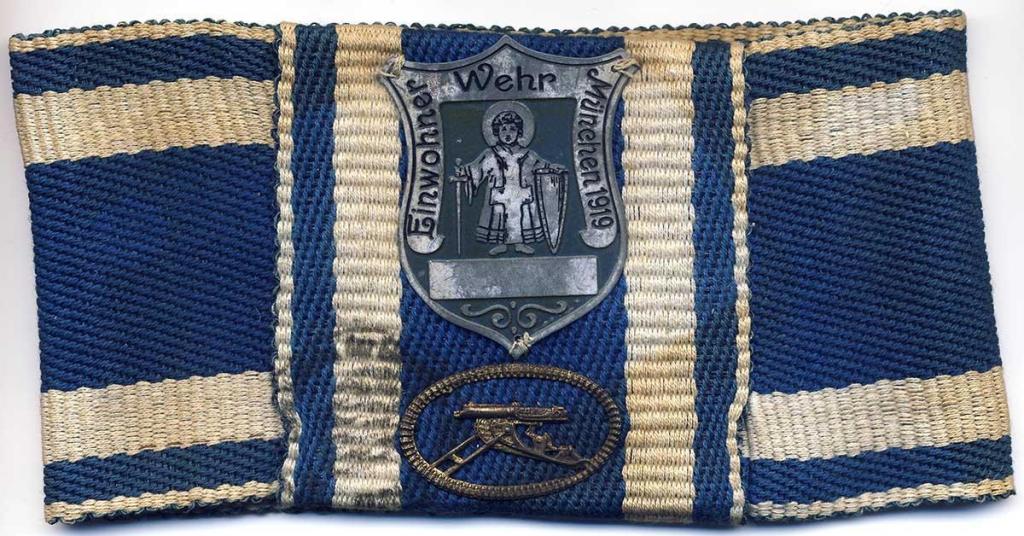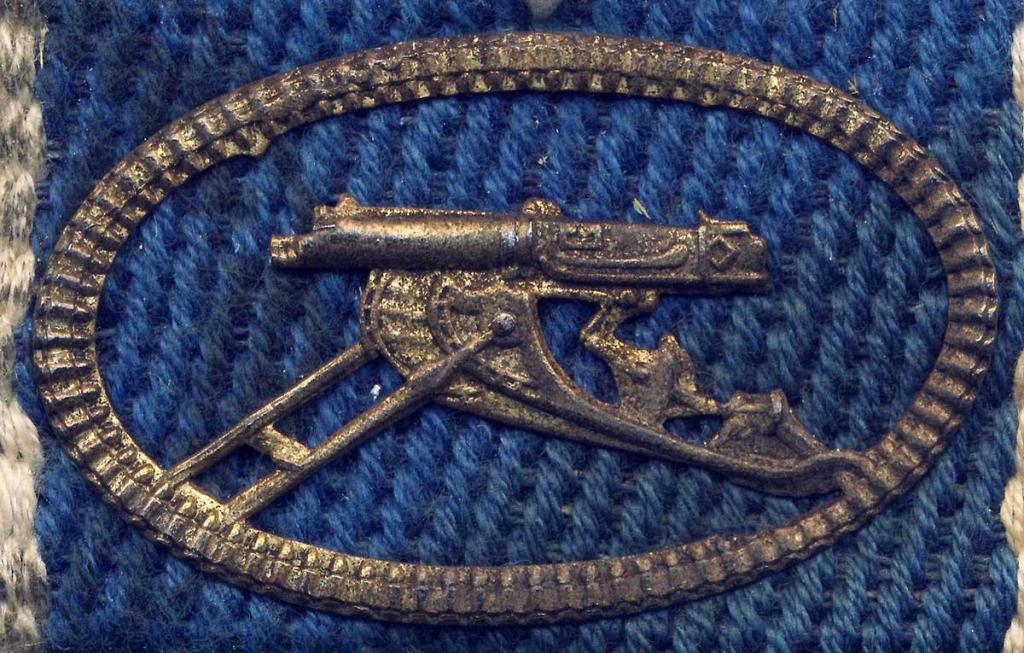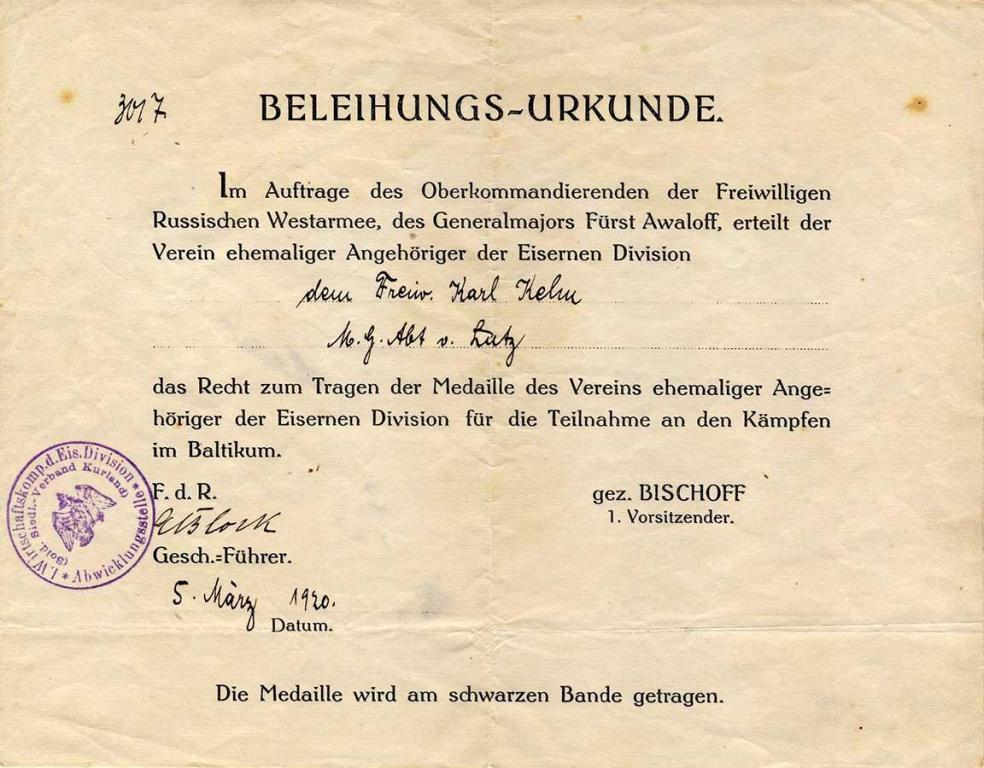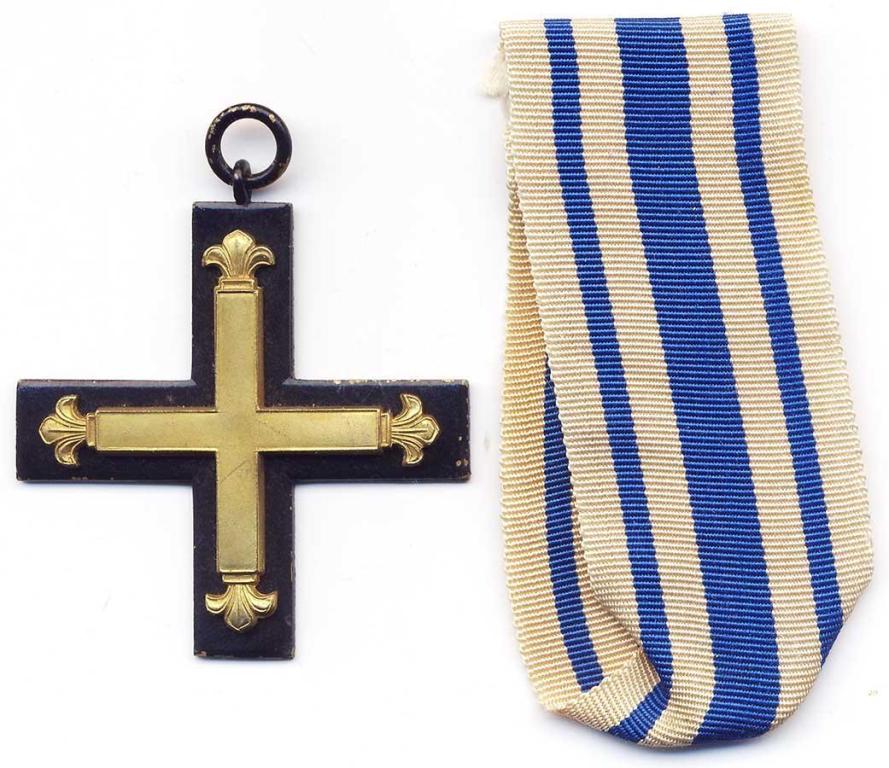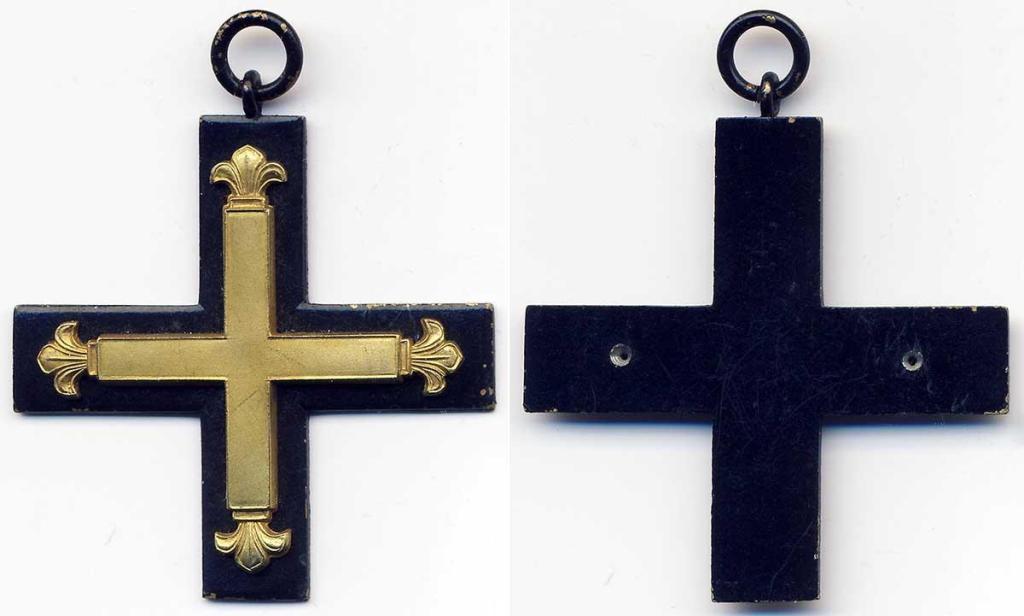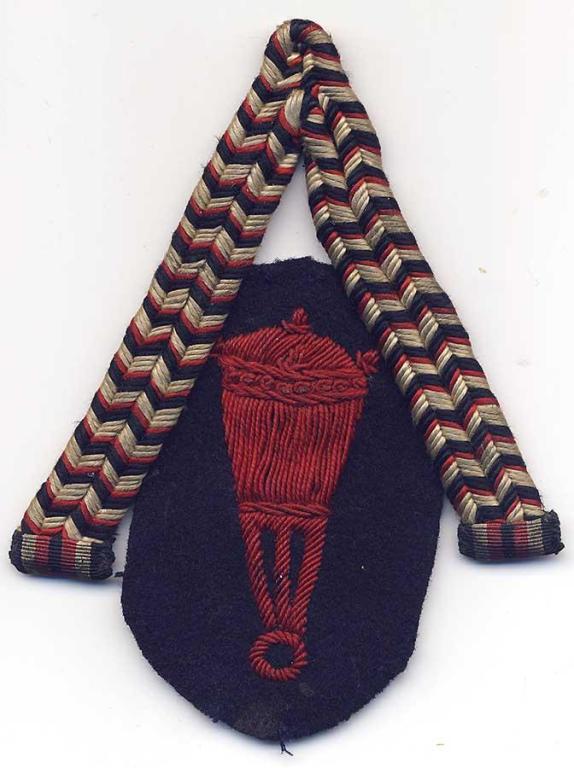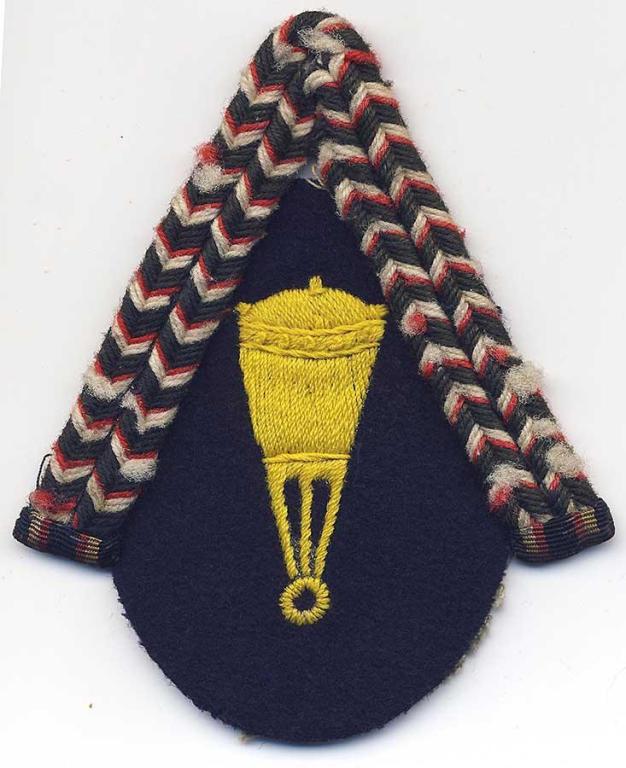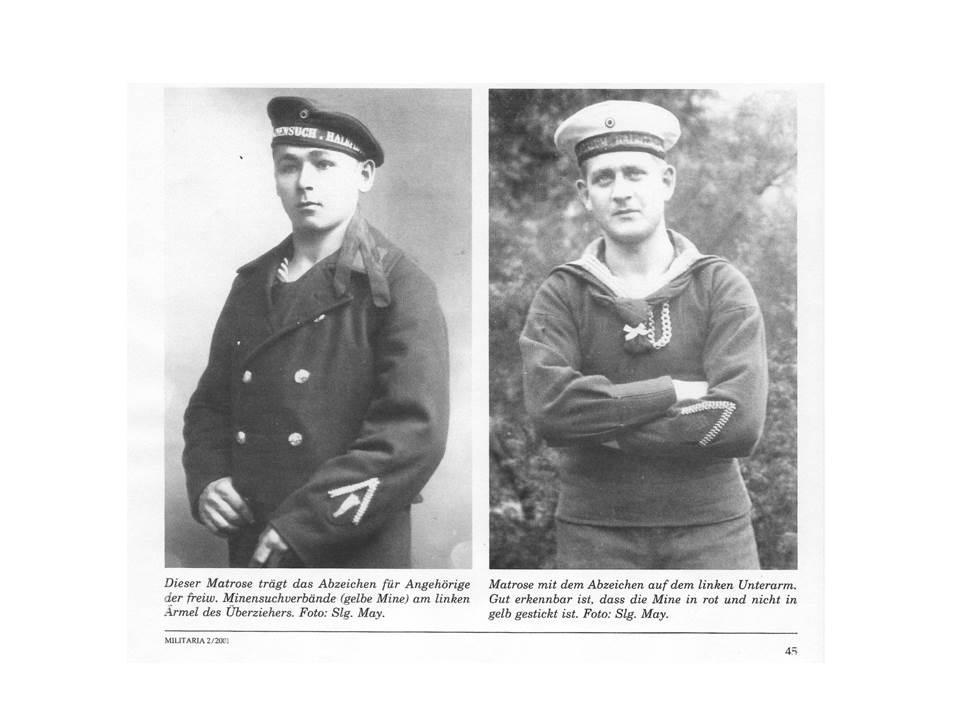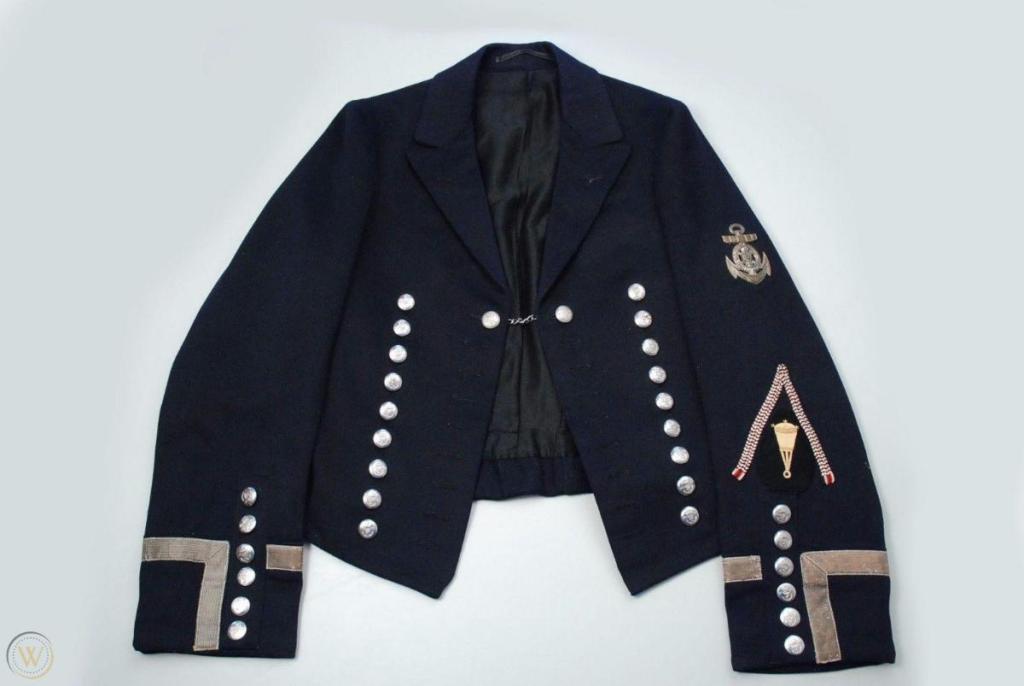
bolewts58
Active Contributor-
Posts
624 -
Joined
-
Last visited
-
Days Won
11
Content Type
Profiles
Forums
Blogs
Gallery
Events
Store
Everything posted by bolewts58
-
Freikorps Insignia
bolewts58 replied to Nick's topic in Germany: Weimar Republic & Deutsche Freikorps
I thought I'd bring this thread back after a year with a recent and very rare acquisition. Einwohnerwehr München Leader's Armband with MGSS "Prinzen" size badge by K. Schorp, Stuttgart. According to the identification of the only other one of these I've ever seen, it was supposedly worn by the Sturmbataillon leader of the Einwohnerwehr. But, I tend to think it's not quite that glamorous. Given the Einwohnerwehr was mostly made up of older men, the idea of a Sturmbataillon seems a bit far fetched. But, given there were also students involved in the Einwohnerwehr maybe that identification is possible. Still, I tend to think it was more likely worn by a machine gun detachment leader. Either way, it's quite rare. -
Actually, I'm not prone to arguments at all. I actually can't remember ever having an argument on here with anyone until now. But, you're being obtuse, playing with semantics and splitting hairs about 'East, Far East' to make yourself look clever. You were originally talking about Western Russian, which I addressed. Of course I know that the Baltic is East of Germany. This conversation has turned into you doubling down on irrelevant minutiae. AND, you are STILL talking down to me, which I don't appreciate. The bottom line is, you entered into this exchange about this ribbon bar contributing nothing to the conversation because you know nothing about what is being discussed. I've read your other posts. You rarely contribute any useful information. At best you jump in with speculation that adds nothing. At the moment, I'm the one who has concrete knowledge about the Iron Division Medal and why it might be on this bar. That's all the OP is looking for - the possible reason why he has that Freikorps medal combined with the EK and China medal. For one thing, as a China veteran, he would have been at least in his 30s during WWI and middle-aged by the time of the Freikorps period - so older than normal for this type of service. If you read my posts on GMIC, you'll see what I've contributed. Can you say the same? I'm not looking for a fight or to compete with you. But, your tone is condescending and offensive and this isn't the first time I've noticed it. I'll steer clear of you from now on. I don't need to waste my time with know-it-alls and smart asses. But, I would suggest that if you are as clever and knowledgeable as you think you are, then post something from your collection that contributes to the knowledge of the forum community.
-
Don't talk down to me like I'm an idiot. I have collected Freikorps for over 50 years. I don't need a lesson from you on the Iron division or the medal. I own one and an award document to it and happen to specialize in the "Eiserne Division". I'm also the moderator of the Freikorps Forum on WAF. I was responding to the unclear way you wrote your comment which implied that he remained in China ("prolonged his stay in the East") as you were discussing China just before you made this comment. I don't need a geography lesson from you. As I stated, if he received this medal he would have been operating in some capacity in the Eiserne Division / Russian Westarmee in Latvia and Lithuania. If you actually knew anything about this you'd know that the Russian Westarmee took over the Iron Division after it rebelled against orders from the German Government in 1919. It was then commanded by both General Rüdiger Graf von der Goltz and General Pavel Bermondt-Avalov, a White Russian warlord. They did not operate in Western Russia, except in some air battles that took place over Russia. The theater of operation was the two Baltic states I mention: hence why it was called the Baltic Campaign.
-
Your comment about "prolonging his stay in the East with a Freikorps unit" makes no sense with regards to the Freikorps or the Iron Division Medal, if by "East" you mean China. The Freikorps areas of operation were Germany, Silesia, Latvia and Lithuania. The Iron Division operated in Latvia and Lithuania. So, that's where he would have had to have been to get this medal.
-
I was under the impression that the Godet dies were destroyed when Klietmann died in 1990, hence my statement that they did not make anything after 1990. Also, as I indicated, Klietmann never pumped out massive amounts of post-war material from the original dies because everyone knew he had them. He made a comparatively small number of samples for study. I was acquainted with and corresponded with Klietmann for close to 20 years. So, I'm fairly familiar with what he was involved in. As I also already indicated, he was however involved in the high-end fakery with Ingo Blass of Hamburg with the center of manufacture of their nefarious wares in Hungary in the late 1970s into the 1980s. They certainly never bothered with low-end stuff like the iron cross 1 class, which you could buy back then for $25. They produced very high-end Imperial German and Third Reich orders and decorations selling in the thousands and tens of thousands of dollars.
-
You've got your facts a little wrong. The person who got "the machines" was Dr. Kurt-Gerhard Klietmann who acquired Gebrüder Godet & Co and all it's equipment in 1964 from the widow of Eugen Godet through his directorship of the Instituts für Wissenschaftliche Ordenskunde. Eugen's widow carried on the business after WWII and is thought to have produced some orders and decorations from the still existing original dies. When the Instituts für Wissenschaftliche Ordenskunde acquired Godet, it is generally believed that Klietmann also continued to produce some orders and decoration but not anywhere near to the degree that modern mythology suggests. He was involved in other fakery in the 1970s and early 80s, however with another high-end dealer at the time, Ingo (Ernst) Blass. But, Klietmann died in 1990. So, your statement about reunification is nonsense. Most of what he produced alone and then later with Blass is easily identifiable now to knowledgeable collectors. As to experts in the Iron Cross; there are quite a few people who I would consider expert. There are excellent books and databases available with which to compare most crosses you might come across on the market.
-
Another ebay seller who sells the same junk every week, likely as a third party seller has the id of porre81. His real name is Mark Porreda. I actually have his address in Germany somewhere. He photographs all his stuff on a black background and is fond of using lots of artificial aging chemicals. I had an altercation with him once and he's a really nasty prick.
-
G.K.S.D. collar tab
bolewts58 replied to Eric Stahlhut's topic in Germany: Weimar Republic & Deutsche Freikorps
Thanks Eric. Not as rare as your officer tab, but still fairly scarce. -
G.K.S.D. collar tab
bolewts58 replied to Eric Stahlhut's topic in Germany: Weimar Republic & Deutsche Freikorps
-
Unknown Medal
bolewts58 replied to Bernd Stephan's topic in Germany: Weimar Republic & Deutsche Freikorps
Not Freikorps. My guess would be Free Masons. -
I think it's more likely that this ribbon has been added relatively recently. It would not have been at all difficult to source a proper, original ribbon even as recently as the 1970s from a military supply store or tailor. One should remember that the Baltic Cross was available for purchase by Freikorps veterans well into the 1970s. Even now, there's a large roll of original ribbon for sale on eBay Germany.
-
Alfred von Randow with his medal bar
bolewts58 replied to webr55's topic in Germany: Weimar Republic & Deutsche Freikorps
I agree. Looking at it again, that's what is. -
Alfred von Randow with his medal bar
bolewts58 replied to webr55's topic in Germany: Weimar Republic & Deutsche Freikorps
5) some sort of Kaiser Wilhelm / Kaiser Franz Josef commemorative medal. There were several unofficial versions throughout the war. 7/ I'm pretty sure this is the Russian order of St. Anne 3rd class. 8)Actually the Diebitsch Cross 2nd class from Freikorps Diebitsch (an officer of Detachment von Randow would not wear the Deutschritter-Kreuz, 2nd class. It was for NCOs and enlisted men. Also, it never had swords.) 9) Hungarian War Commemorative Medal 10) Bulgarian War Commemorative Medal 11) Russian St. George Medal of the Russian West Army The last 2 sword devices on the ribbon bar are just extra "bling" and shouldn't be there. It's unusual that someone who started the war as a Hauptmann, finished the war, still as a Hauptmann only got an EK I and II and no state awards, not even a war merit cross or two. He was just a staff officer during the war and didn't see much combat. But, he was wounded and got a wound badge. So, one would think that he would have gotten some more awards. He was entitled to the Prussian 15 year service cross and may have even been eligible for the 25 year Officer's service cross having finished the war with 23 years service and serving another 2 in the Freikorps. Also, the Kriegserinnerungsmedaille (Österreich) mit Schwertern is in the wrong place. It should have been mounted just before the Hungarian medal. The St. George Medal should have been mounted after the Diebitsch Cross. Overall, it's quite a bizarre, mish-mash of a medal bar with some extraneous stuff thrown on it. I'm surprised he doesn't have the unofficial Ostfront Cross given he served on the Eastern front in WWI. Clearly, the tailor who put this bar together didn't totally understand the precedent regulations. Officially, he was only entitled to wear an EKII, Ehrenkreuz für Frontkäampfer, Baltic Cross, Kriegserinnerungsmedaille (Österreich) mit Schwertern, Hungarian War Commemorative Medal and Bulgarian War Commemorative Medal.

